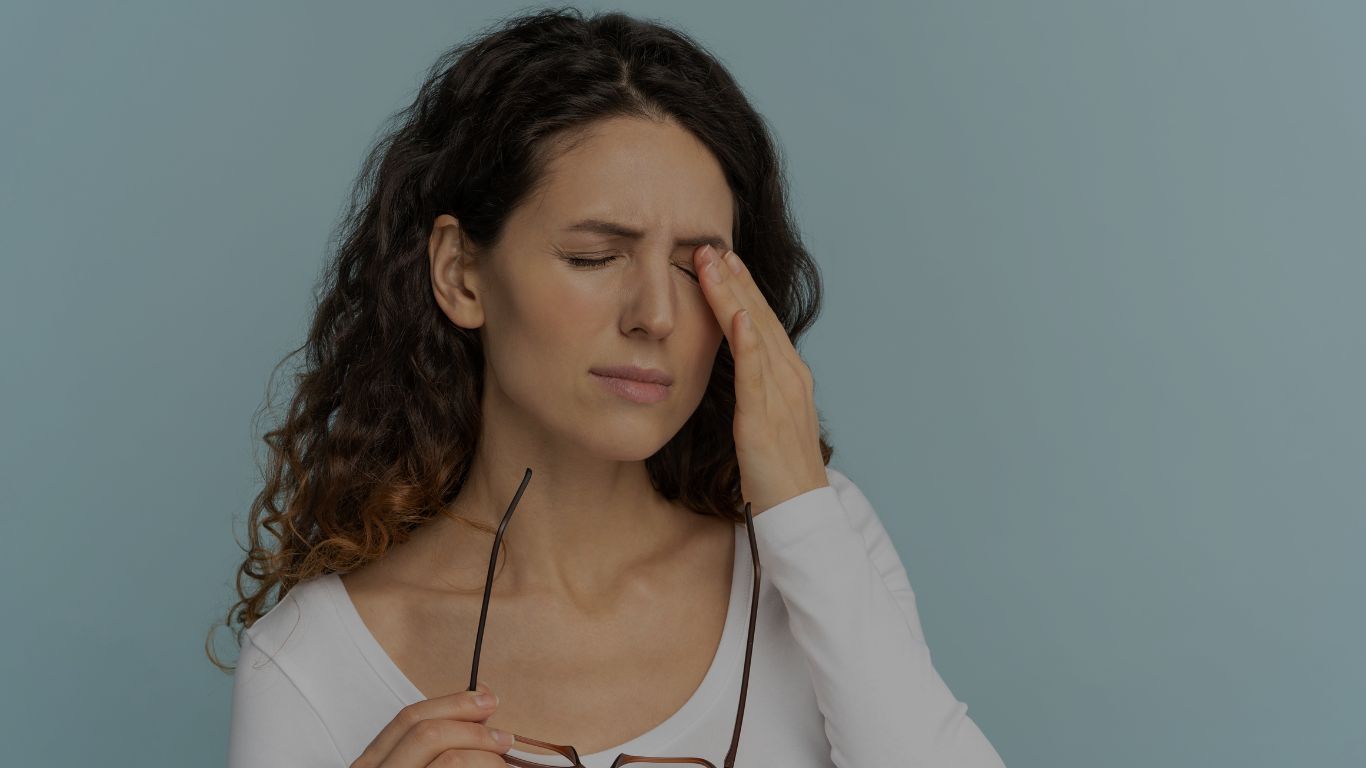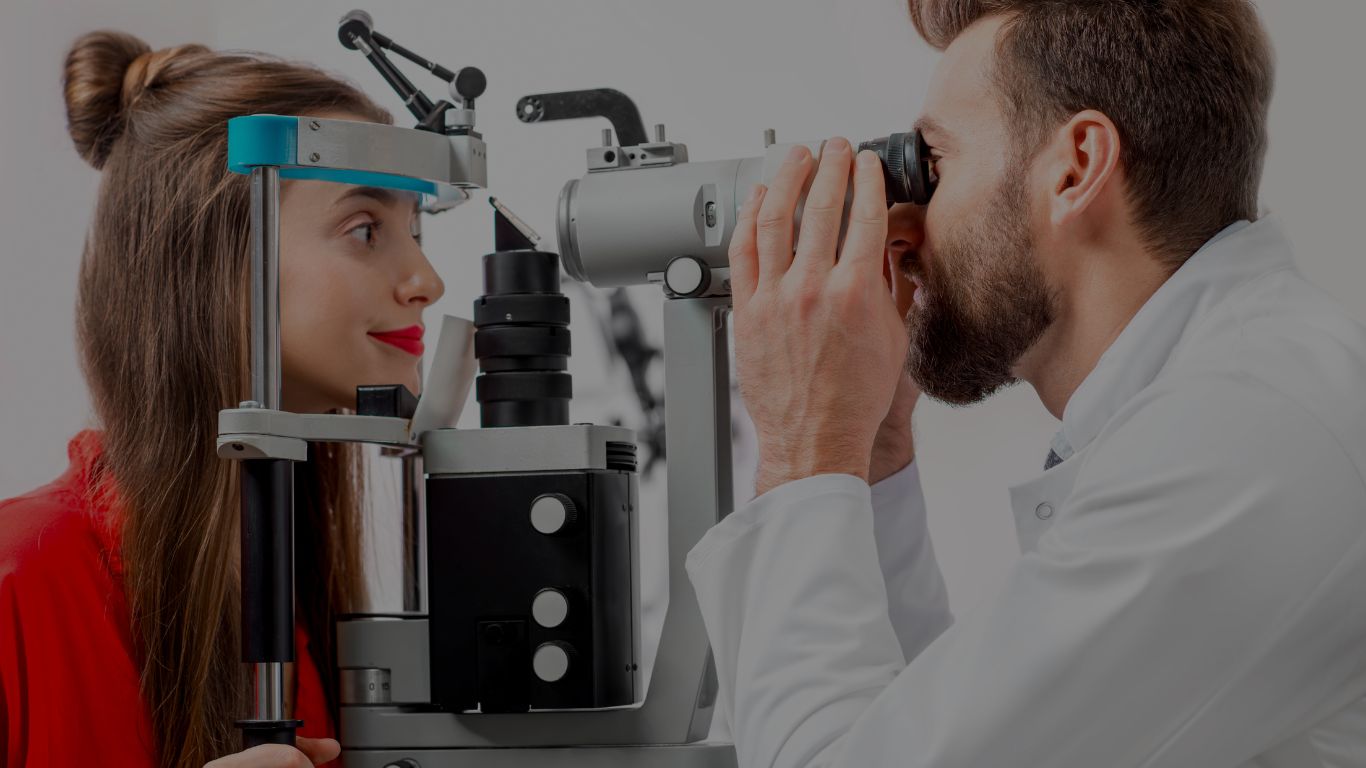Introduction
One of the most common symptoms of dry eyes is blurry vision. Millions of people are affected by blurry vision from dry eyes every day.
However, it’s important to understand the details, because there are many types of blurry vision, and there are many different types of dry eyes. It’s important to understand the type of dry eyes that you have, and the type of blurry vision that you have.
By better understanding your blurry vision and your dry eyes, you’ll be able to understand their connection better and better treat the problem.
Why Do Dry Eyes Cause Blurry Vision?
The surface of the eye is supposed to be smooth. When the surface becomes dry, it becomes lumpy & bumpy on a microscopic level. This roughness results in light entering the eye getting scattered. The light doesn’t focus as sharply as when the surface is smooth. This results in blurry vision.
Imagine if your glasses had a rough or smudgy surface. It would result in blurry vision. In a similar way, dryness results in the cornea, which acts as a natural type of lens on the outside of our eyes, becoming cloudy.
What type of blurry vision do dry eyes cause?
The term “blurry vision” can mean many different things to different people.
For some people “blurry vision” might mean that their vison went completely black. For others, it might mean that objects or letters are a little fuzzy on the edges. Of course, it can mean anything in between.
Other common symptoms of dry eyes include redness, pain, and irritation.
Let’s discuss the types of blurry vision that dry eye can cause.
Fluctuating vision
The hallmark of blurry vision associated with dry eyes is fluctuating vision. This is true for most patients who have blurry vision caused by their dry eyes.
The surface of the eye is covered by a tear film. This tear film results in a clear and smooth surface. When the surface of the eye becomes dry, the cornea becomes rough, lumpy, and bumpy on a microscopic level.
This results in the scattering of light as it enters the eye, and a fuzzy image being transmitted to the brain.
Every time we blink, the eyelids smooth out the tear film. When the tear film is healthy, the tear film remains stable during the time between blinks, resulting in a consistently clear image.

When the surface of the eye is dry, the tear film may evaporate, or be insufficient to cover the surface of the eye. This results in blurry vision.
The tear film may change day-to-day, minute-to-minute, or even blink-to-blink. This can result in a fluctuating type of blurry vision.
Patients with blurry vision from dry eyes may notice that if they blink several times the image become clearer. They typically also notice that artificial tear drops can help sharpen the vision.
Glare, halos, starbursts
Light entering the eye first passes through the tear film and then the cornea. Both of these are supposed to be crystal clear.
Many conditions can cause them to be irregular, including dry eyes.
Other conditions that can cause an irregular surface of the eye include corneal scars, corneal ectasia, or corneal dystrophies.
Light passes through these irregular tear films or corneas gets scattered. This scattered light is perceived by patients as glare, halos, or starburst.
These symptoms can become particularly noticeable while driving at night.

Glare can also be caused be other conditions, such as cataracts. For this reason, it is important to see an eye doctors to ensure that you are diagnosed correctly. After your diagnosis you can work on treating the condition.
What causes dry eyes?
There are many things that can cause or contribute to dry eyes. Here are a few of the common causes of dry eyes:
- Age: As we get older, our eyes naturally produce fewer tears
- Medications: Certain medications, such as antihistamines and decongestants
- Hormonal changes: Hormonal changes, such as those that occur during menopause, can also cause dry eyes
- Environmental factors: Wind, dry air, ceiling fans, and smoke can all contribute to dry eyes
- Medical conditions: Certain medical conditions, such as Sjogren's syndrome
How to treat dry eyes and blurry vision
The starting point for the treatment of dry eyes is artificial tears. Every patient with dry eyes can benefit from a high-quality artificial tear.
For some patients, using an artificial tear drop a few times per week is enough to manage their symptoms.
For other patients, they may need to use artificial tears every hour… or even more.
Allergies
Sometimes dry eye symptoms are seasonal or short-term. An example of this is when allergies cause dry eyes. A common treatment regimen might be artificial tears 4 to 6 times per day in addition to an anti-allergy eye drop. Some patients may need to do this for a few weeks every year during their allergy season.
Artificial Tears
As a good rule, if you find that you need to use artificial tears consistently more than every 2 hours, it’s reasonable to ask your doctor if there are other things you can try in addition to your tears.
Contact Lenses
Many patients find that contact lenses cause their dry eyes. If this is the case, discuss options with your doctor to try other contact lens brands or alternatives.
Punctal Plugs
Tears are drained away try little drainage tubes located at the nasal corner of the eye lids. Punctal plugs can be used to slow the drainage of tears to keep the eyes better lubricated.
Omega-3 Fatty Acids
The quality of natural tears is important. Omega-3 fatty acids can improve the quality of natural tears. Omega-3's are available in a variety of natural foods and also supplements.
There are many treatments that can be added to your baseline artificial tears. Check out our comprehensive guide to dry eye treatments for more information on these additional treatments.
Summary
Dry eyes can be a frustrating and uncomfortable condition that can cause blurry vision. If you're experiencing blurry vision and suspect that it may be caused by dry eyes, it's important to understand the connection between the two and what you can do to alleviate the symptoms. With the right treatment, you can reduce dryness and inflammation in the eyes, and improve your vision. It is important to consult with an ophthalmologist if you suspect that you have dry eyes and blurry vision, as they can help to determine the underlying cause and recommend the most effective treatment.




